Find these visible planets in October 2021: Venus, Jupiter, Saturn, Mercury, Mars, Uranus
Try Stellarium for a precise view from your location.
For more specific information on planet rise and set times from your location, consult either The Old Farmer’s Almanac (U.S. and Canada) or timeanddate.com (worldwide); or see EarthSky’s list of recommended almanacs.
Visible planets, the moon and more

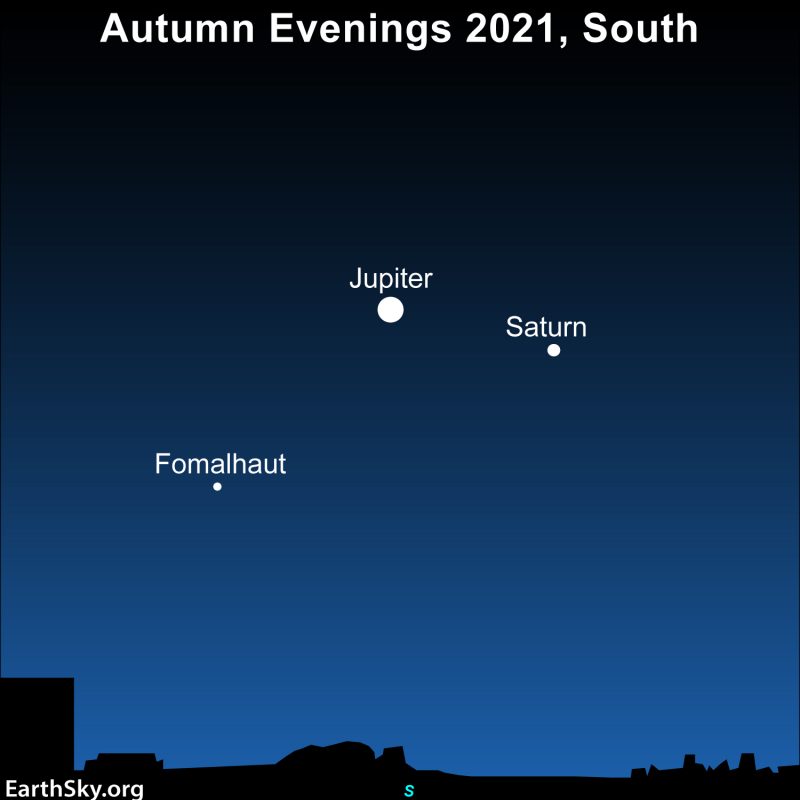
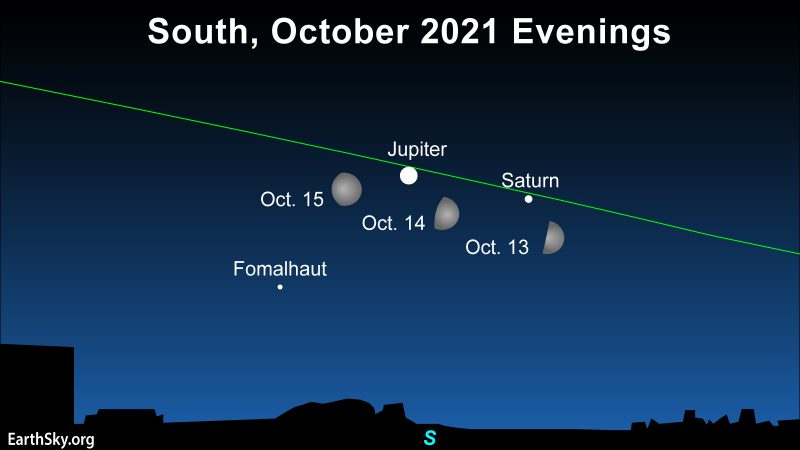



Planets in October 2021
Also see the indispensable Observer’s Handbook, from the Royal Astronomical Society of Canada
Jupiter and Saturn appeared so close together in December 2020 that they made headlines around the world. Astronomers called their meeting a great conjunction. Throughout 2021, Jupiter have been moving eastward with respect to Saturn. It’s shifting away from Saturn on our sky’s dome, as it pursues its smaller orbit around the sun (12 years for one orbit, in contrast to Saturn’s 29 years). But, as seen from Earth, these two worlds still appear close enough to each other in our sky that you’ll find them very noticeable. That’s especially true because Jupiter is brighter than all the stars, and much brighter than Saturn. And so you can notice Jupiter easily along the ecliptic, or sun’s path, throughout the evening, throughout October 2021.
How to recognize Saturn? Saturn is the brightest “star” within one fist-width of Jupiter (to the right as seen from the Northern Hemisphere, and to the left from the Southern). Saturn is brighter than the bright star Fomalhaut, also nearby. Around the nights of October 13 to October 15, 2021 (see chart above), look southward from the Northern Hemisphere, or closer to overhead from the Southern Hemisphere, to watch the moon, Jupiter and Saturn. Note that first quarter moon is October 12-13 (3:35 UTC on October 13). Then the waxing gibbous moon will pass Saturn 4 degrees south of Saturn on October 14 at about 07:00 UTC. It will pass 4 degrees south of Jupiter on October 15 at 10 UTC.
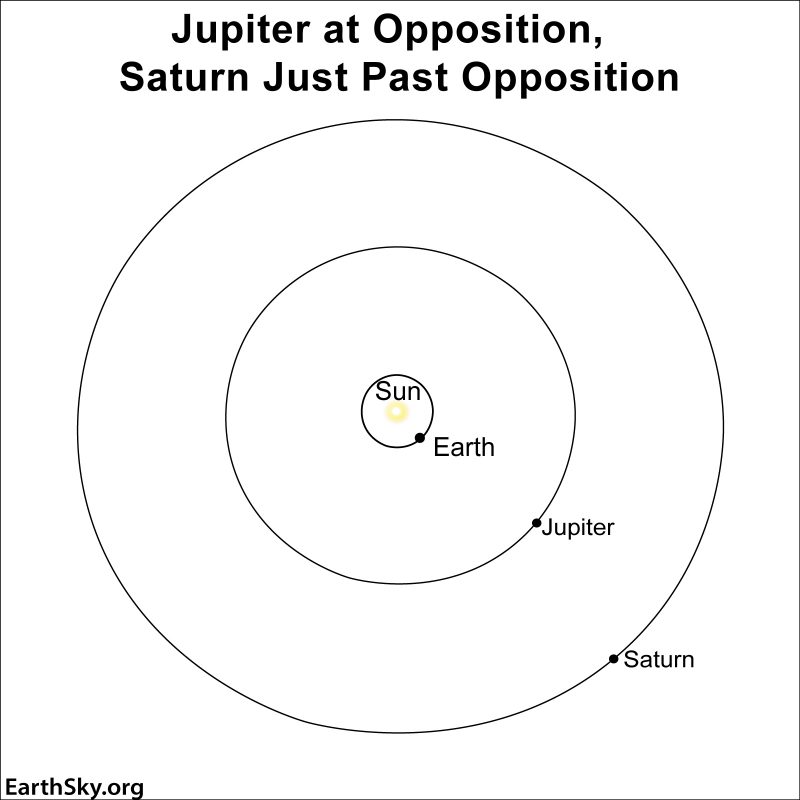
Venus, brilliant and unmistakeable, lies low in the sunset direction for Northern Hemisphere observers, higher up for those in the Southern Hemisphere. In October 2021, Venus can be found near the red star Antares, brightest star in the constellation Scorpius the Scorpion. Each evening, the planet moves a little closer to Antares, finally meeting it on October 15 and 16. In the meantime, the thin crescent moon slides above Venus on October 9. This should prove to be an enchanting scene with the lunar crescent, full with Earthshine, glowing above brilliant Venus. Through binoculars, you can discern details on the moon’s night side. From our earthly viewpoint, the brilliant planet swings away from the sun on the sky’s dome, reaching its greatest distance from it (greatest elongation) on October 29. Unfortunately for Northern Hemisphere observers, the planet remains fairly low above the horizon. However, because of the angle of the ecliptic, Southern Hemisphere skywatchers see it jump quite high in their western early evening sky, making quite an impression before the end of 2021.
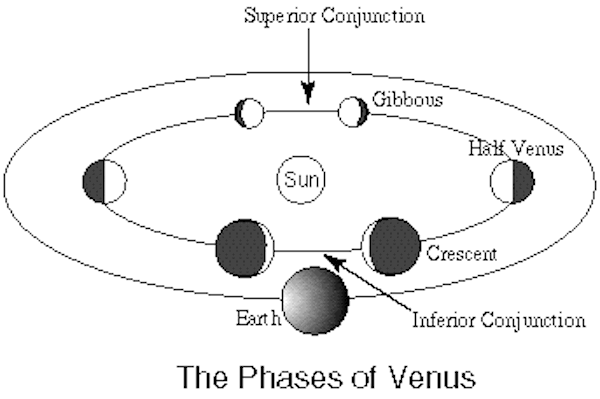
Mercury is hidden in the the sun’s glare in early October 2021, crossing the sky with the sun during the day. Inferior conjunction, when Mercury sweeps between us and the sun, comes on October 9. Then – for the Northern Hemisphere – Mercury pops up in the morning sky shortly before the sun in the second half of October. It shines as a bright magnitude 0.0 point of light, low above the eastern horizon as dawn is beginning to break. It reaches its greatest angular distance from the sun on October 25-26. By month’s end, Mercury will still be noticeable, but only for 30 minutes or so before the morning twilight sky brightens too much. Southern Hemisphere skywatchers won’t see as good of a show as northern observers. This is because the southern half of Earth’s globe will remain lost in the bright morning twilight all month. Unfortunately, Mercury is behind the sun when the moon sweeps through the October predawn sky. So we never have a morning in October 2021 when the waning crescent moon is near Mercury. We will have one in November though!
Uranus is reaching its best time of year to be observed. It’ll come to opposition on November 5. Even so, Uranus is very dim, even in a dark sky. But you can glimpse it with the eye under ideal conditions. And it can be identified with binoculars. Uranus might be the next planet beyond easy-to-see Saturn, but it needs a detailed star chart to be correctly identified; TheSkyLive has one. Want to try for Uranus? Read more about Uranus at opposition November 5.
Mars moves directly behind the sun on October 8, and, therefore, can’t be seen. The next real opportunity to spot the Red Planet with the unaided eye won’t be until the last week of December when it’ll dimly shine low in the sunrise direction, shortly before sunup. For the first half of 2022, Mars will slowly brighten. But it won’t dominate its area of the sky until spring 2022. Read more: What to expect from Mars in 2021 and 2022
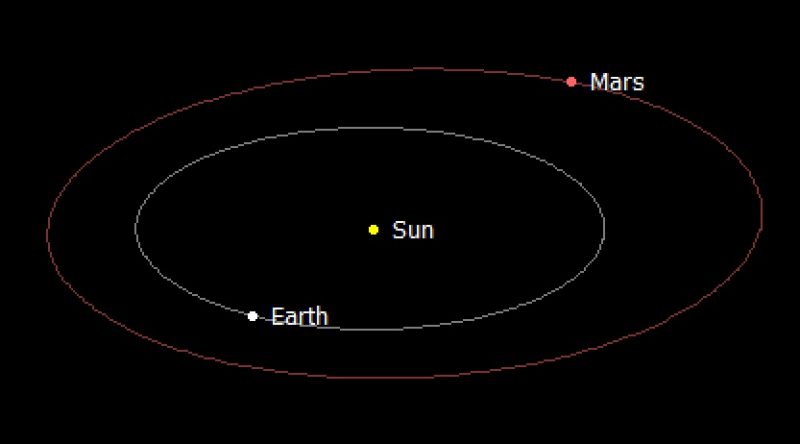
Meteor showers in October
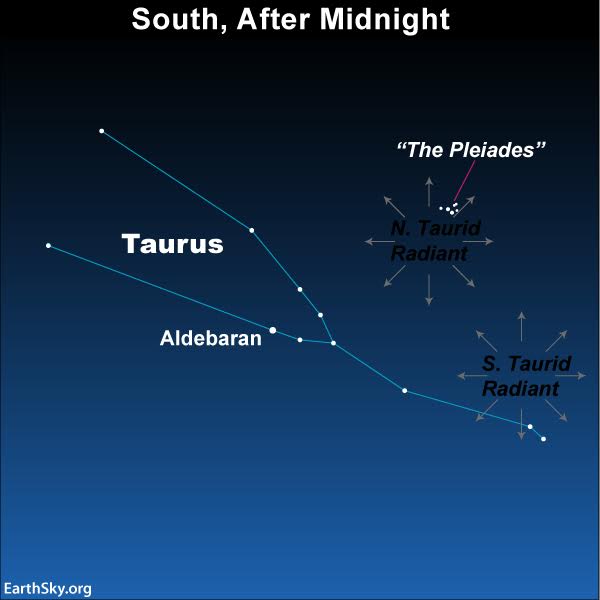
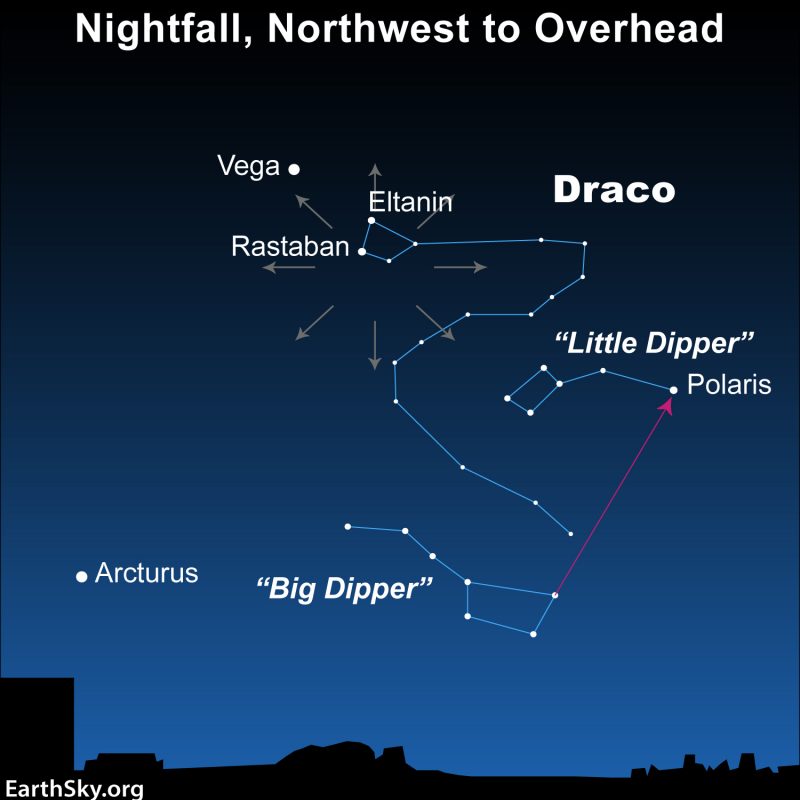
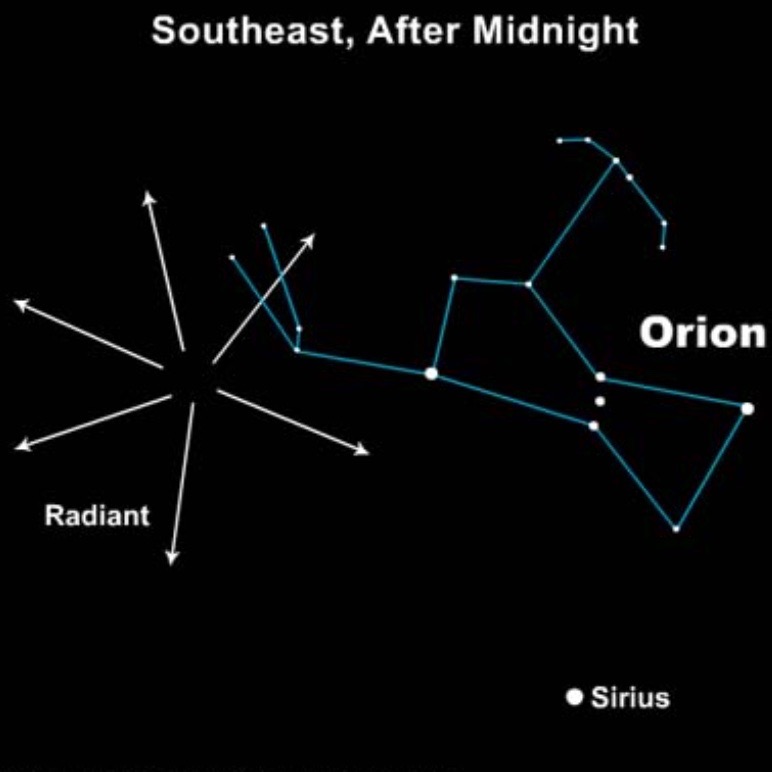
Some resources to enjoy
Try Stellarium for precise views from your location
Try TheSkyLive for precise views from your location
Click here for recommended almanacs to find out precise rise and set times
Translate Universal Time (UTC) to your time
Ecliptic is the sun’s path in our sky
Which ones are the visible planets?
In their outward order from the sun, the five bright planets are Mercury, Venus, Mars, Jupiter and Saturn. These are the planets easily visible without an optical aid. They’re the planets watched by our ancestors since time immemorial. These planets do appear bright in our sky. They are typically as bright as – or brighter than – the brightest stars. Plus, these relatively nearby worlds tend to shine with a steadier light than the distant, twinkling stars.
You can spot them, and come to know them as faithful friends, if you try.

Bottom line: All you need to know about how to find the bright planets of the solar system during the month of October 2021.
Don’t miss anything. Subscribe to EarthSky News by email
Visit EarthSky’s Best Places to Stargaze to find a dark-sky location near you.
Help EarthSky keep going! Donate now.
Post your planet photos at EarthSky Community Photos.
The post Visible planets – and more – in October 2021 first appeared on EarthSky.
from EarthSky https://ift.tt/2SL2h7q
Find these visible planets in October 2021: Venus, Jupiter, Saturn, Mercury, Mars, Uranus
Try Stellarium for a precise view from your location.
For more specific information on planet rise and set times from your location, consult either The Old Farmer’s Almanac (U.S. and Canada) or timeanddate.com (worldwide); or see EarthSky’s list of recommended almanacs.
Visible planets, the moon and more






Planets in October 2021
Also see the indispensable Observer’s Handbook, from the Royal Astronomical Society of Canada
Jupiter and Saturn appeared so close together in December 2020 that they made headlines around the world. Astronomers called their meeting a great conjunction. Throughout 2021, Jupiter have been moving eastward with respect to Saturn. It’s shifting away from Saturn on our sky’s dome, as it pursues its smaller orbit around the sun (12 years for one orbit, in contrast to Saturn’s 29 years). But, as seen from Earth, these two worlds still appear close enough to each other in our sky that you’ll find them very noticeable. That’s especially true because Jupiter is brighter than all the stars, and much brighter than Saturn. And so you can notice Jupiter easily along the ecliptic, or sun’s path, throughout the evening, throughout October 2021.
How to recognize Saturn? Saturn is the brightest “star” within one fist-width of Jupiter (to the right as seen from the Northern Hemisphere, and to the left from the Southern). Saturn is brighter than the bright star Fomalhaut, also nearby. Around the nights of October 13 to October 15, 2021 (see chart above), look southward from the Northern Hemisphere, or closer to overhead from the Southern Hemisphere, to watch the moon, Jupiter and Saturn. Note that first quarter moon is October 12-13 (3:35 UTC on October 13). Then the waxing gibbous moon will pass Saturn 4 degrees south of Saturn on October 14 at about 07:00 UTC. It will pass 4 degrees south of Jupiter on October 15 at 10 UTC.

Venus, brilliant and unmistakeable, lies low in the sunset direction for Northern Hemisphere observers, higher up for those in the Southern Hemisphere. In October 2021, Venus can be found near the red star Antares, brightest star in the constellation Scorpius the Scorpion. Each evening, the planet moves a little closer to Antares, finally meeting it on October 15 and 16. In the meantime, the thin crescent moon slides above Venus on October 9. This should prove to be an enchanting scene with the lunar crescent, full with Earthshine, glowing above brilliant Venus. Through binoculars, you can discern details on the moon’s night side. From our earthly viewpoint, the brilliant planet swings away from the sun on the sky’s dome, reaching its greatest distance from it (greatest elongation) on October 29. Unfortunately for Northern Hemisphere observers, the planet remains fairly low above the horizon. However, because of the angle of the ecliptic, Southern Hemisphere skywatchers see it jump quite high in their western early evening sky, making quite an impression before the end of 2021.

Mercury is hidden in the the sun’s glare in early October 2021, crossing the sky with the sun during the day. Inferior conjunction, when Mercury sweeps between us and the sun, comes on October 9. Then – for the Northern Hemisphere – Mercury pops up in the morning sky shortly before the sun in the second half of October. It shines as a bright magnitude 0.0 point of light, low above the eastern horizon as dawn is beginning to break. It reaches its greatest angular distance from the sun on October 25-26. By month’s end, Mercury will still be noticeable, but only for 30 minutes or so before the morning twilight sky brightens too much. Southern Hemisphere skywatchers won’t see as good of a show as northern observers. This is because the southern half of Earth’s globe will remain lost in the bright morning twilight all month. Unfortunately, Mercury is behind the sun when the moon sweeps through the October predawn sky. So we never have a morning in October 2021 when the waning crescent moon is near Mercury. We will have one in November though!
Uranus is reaching its best time of year to be observed. It’ll come to opposition on November 5. Even so, Uranus is very dim, even in a dark sky. But you can glimpse it with the eye under ideal conditions. And it can be identified with binoculars. Uranus might be the next planet beyond easy-to-see Saturn, but it needs a detailed star chart to be correctly identified; TheSkyLive has one. Want to try for Uranus? Read more about Uranus at opposition November 5.
Mars moves directly behind the sun on October 8, and, therefore, can’t be seen. The next real opportunity to spot the Red Planet with the unaided eye won’t be until the last week of December when it’ll dimly shine low in the sunrise direction, shortly before sunup. For the first half of 2022, Mars will slowly brighten. But it won’t dominate its area of the sky until spring 2022. Read more: What to expect from Mars in 2021 and 2022

Meteor showers in October



Some resources to enjoy
Try Stellarium for precise views from your location
Try TheSkyLive for precise views from your location
Click here for recommended almanacs to find out precise rise and set times
Translate Universal Time (UTC) to your time
Ecliptic is the sun’s path in our sky
Which ones are the visible planets?
In their outward order from the sun, the five bright planets are Mercury, Venus, Mars, Jupiter and Saturn. These are the planets easily visible without an optical aid. They’re the planets watched by our ancestors since time immemorial. These planets do appear bright in our sky. They are typically as bright as – or brighter than – the brightest stars. Plus, these relatively nearby worlds tend to shine with a steadier light than the distant, twinkling stars.
You can spot them, and come to know them as faithful friends, if you try.

Bottom line: All you need to know about how to find the bright planets of the solar system during the month of October 2021.
Don’t miss anything. Subscribe to EarthSky News by email
Visit EarthSky’s Best Places to Stargaze to find a dark-sky location near you.
Help EarthSky keep going! Donate now.
Post your planet photos at EarthSky Community Photos.
The post Visible planets – and more – in October 2021 first appeared on EarthSky.
from EarthSky https://ift.tt/2SL2h7q

Aucun commentaire:
Enregistrer un commentaire